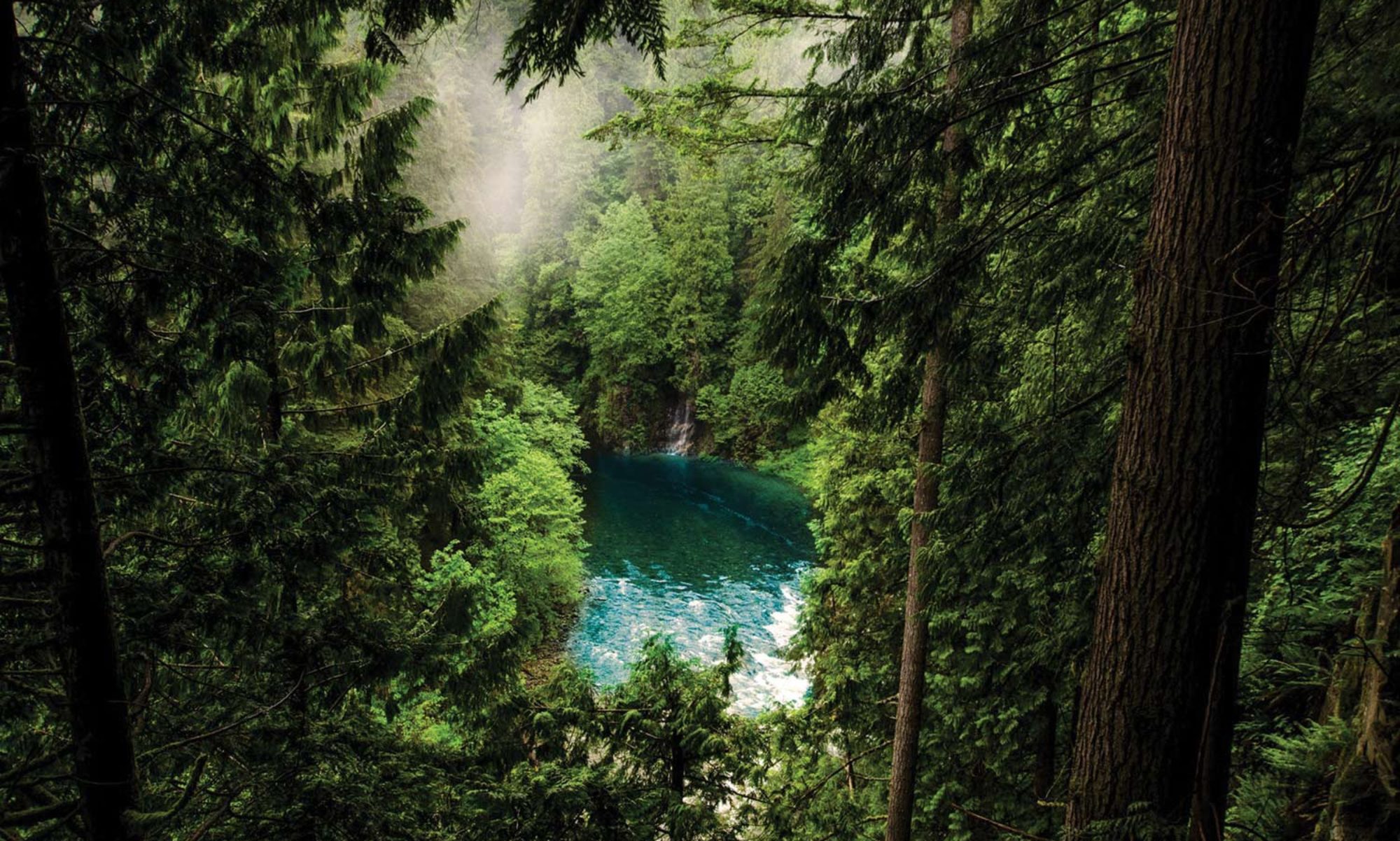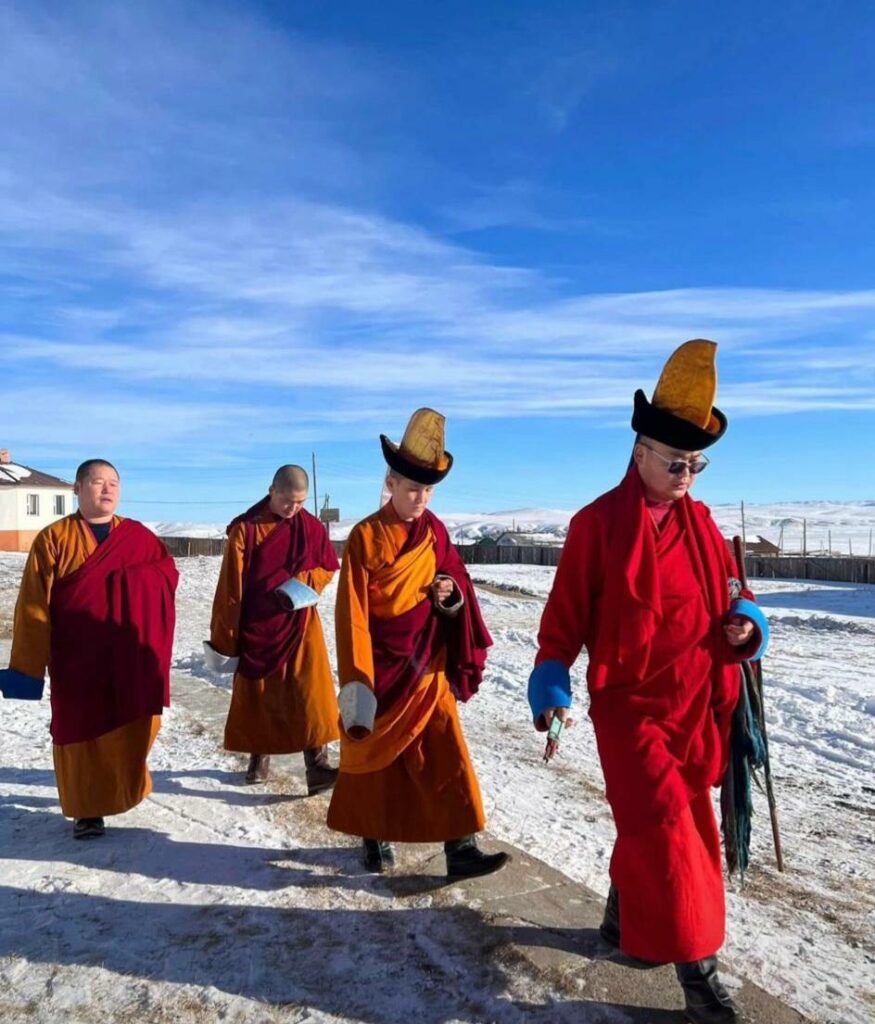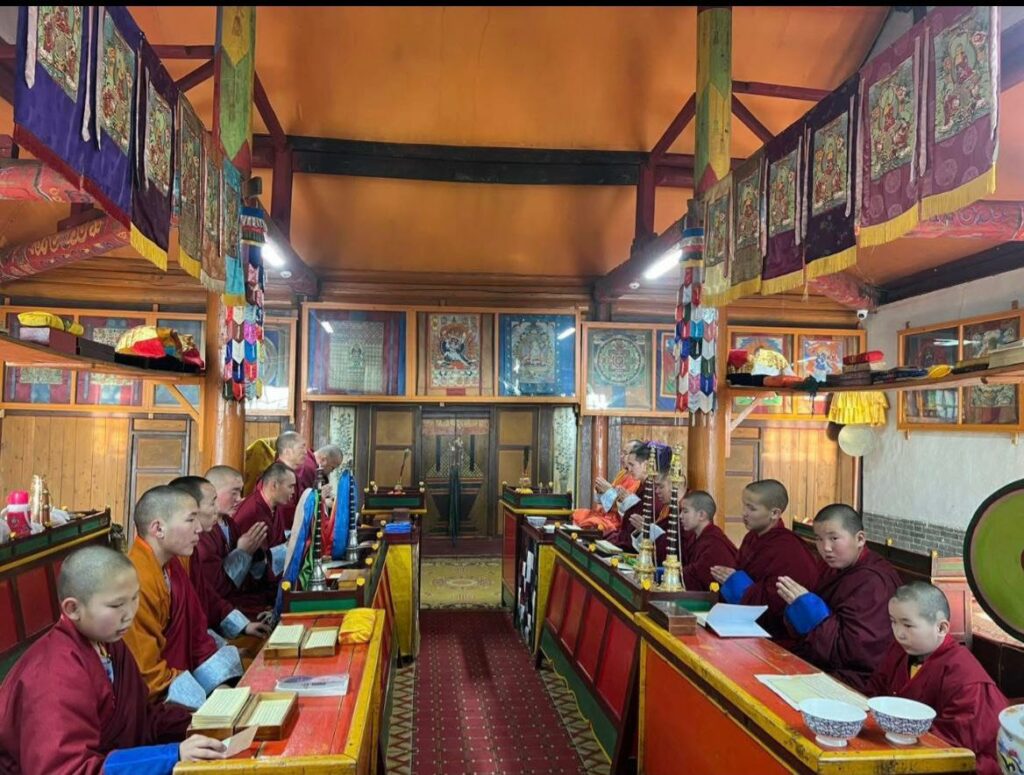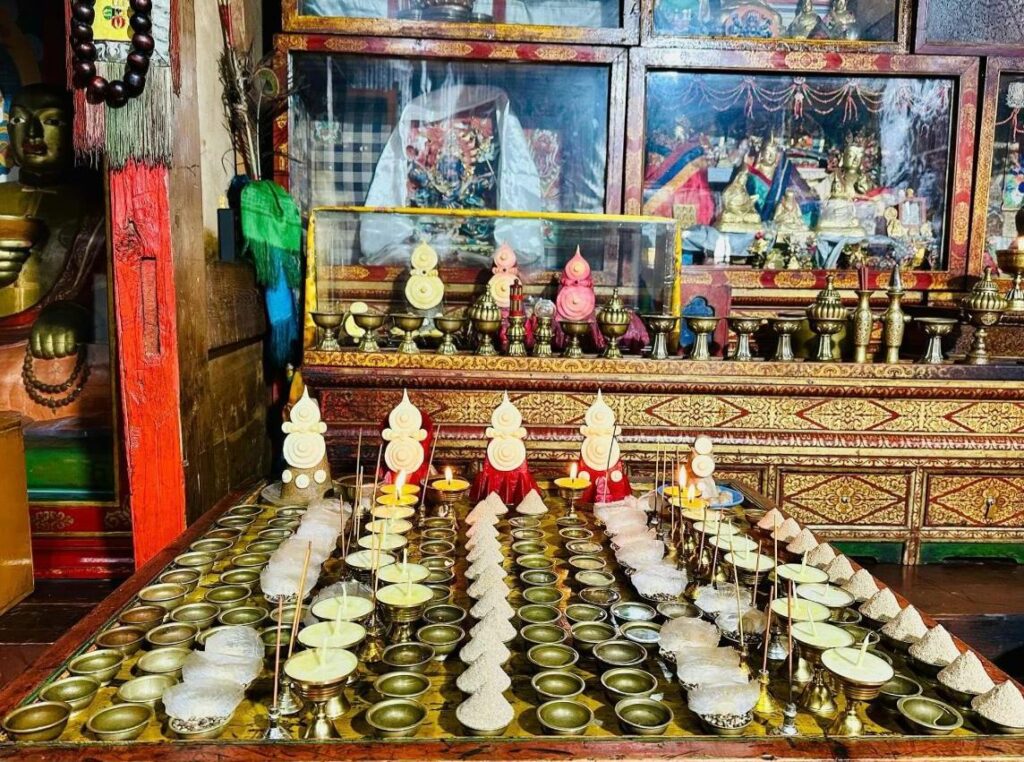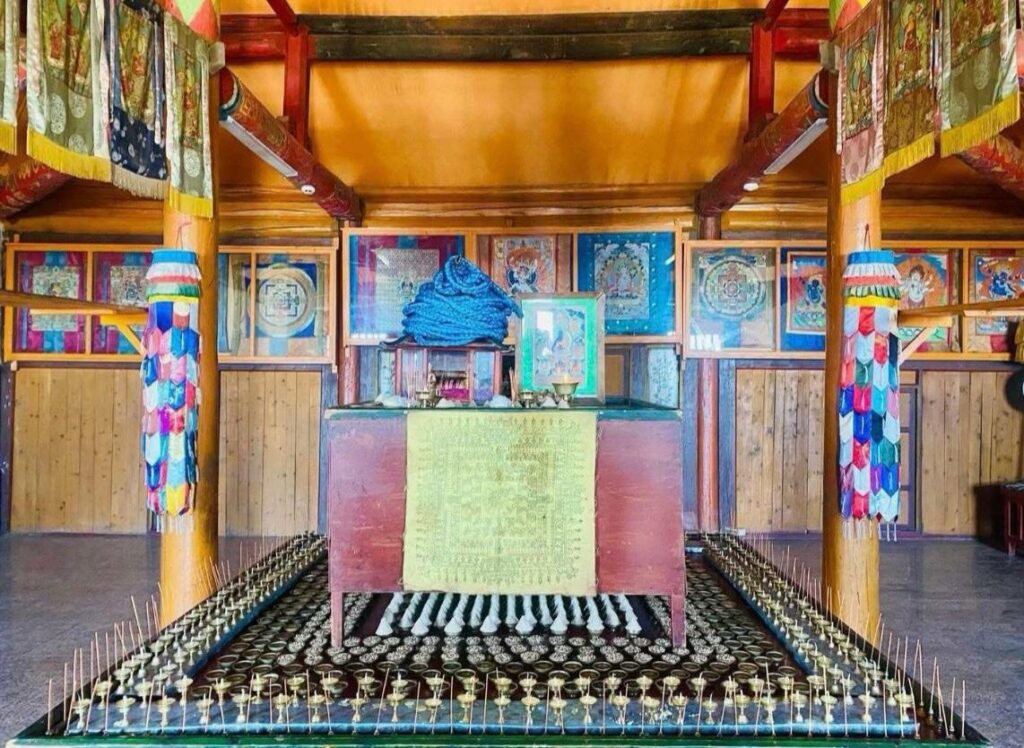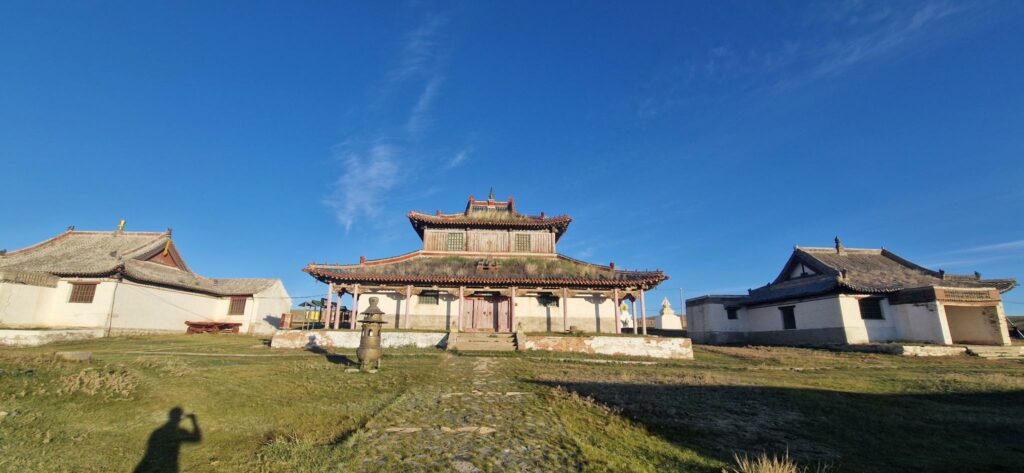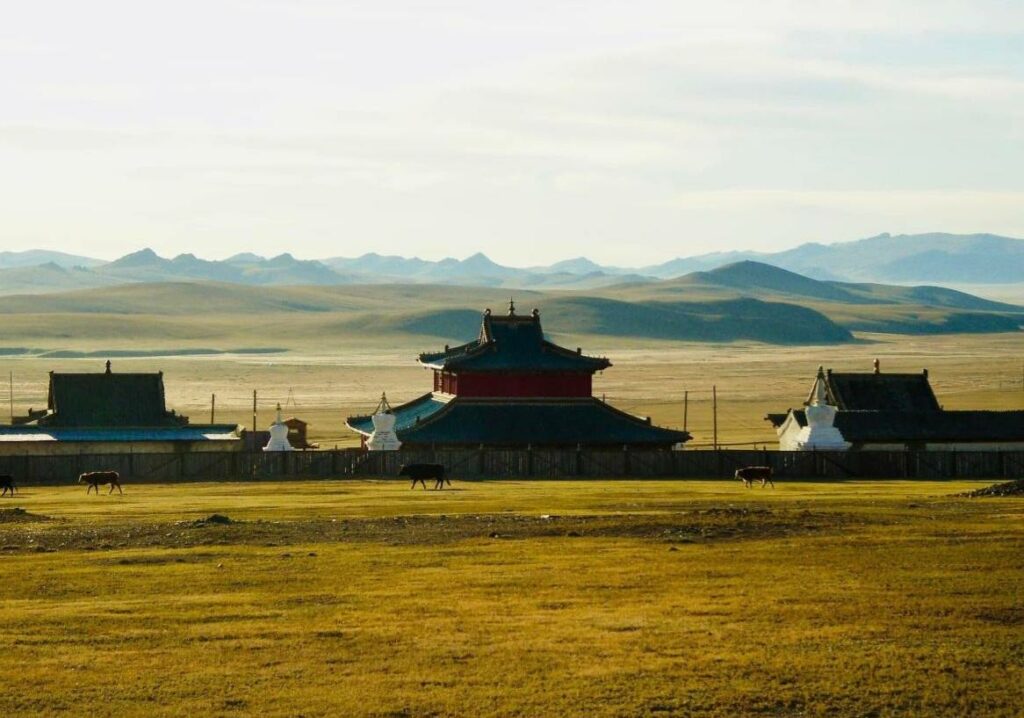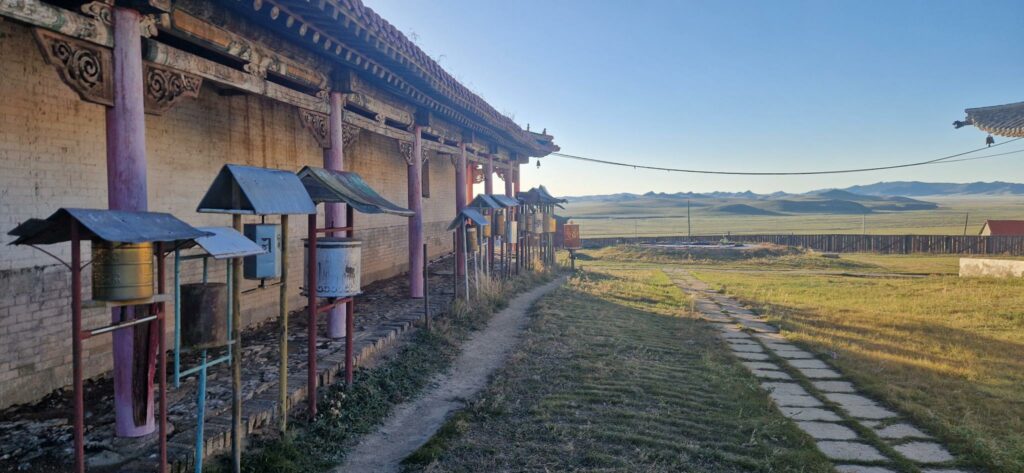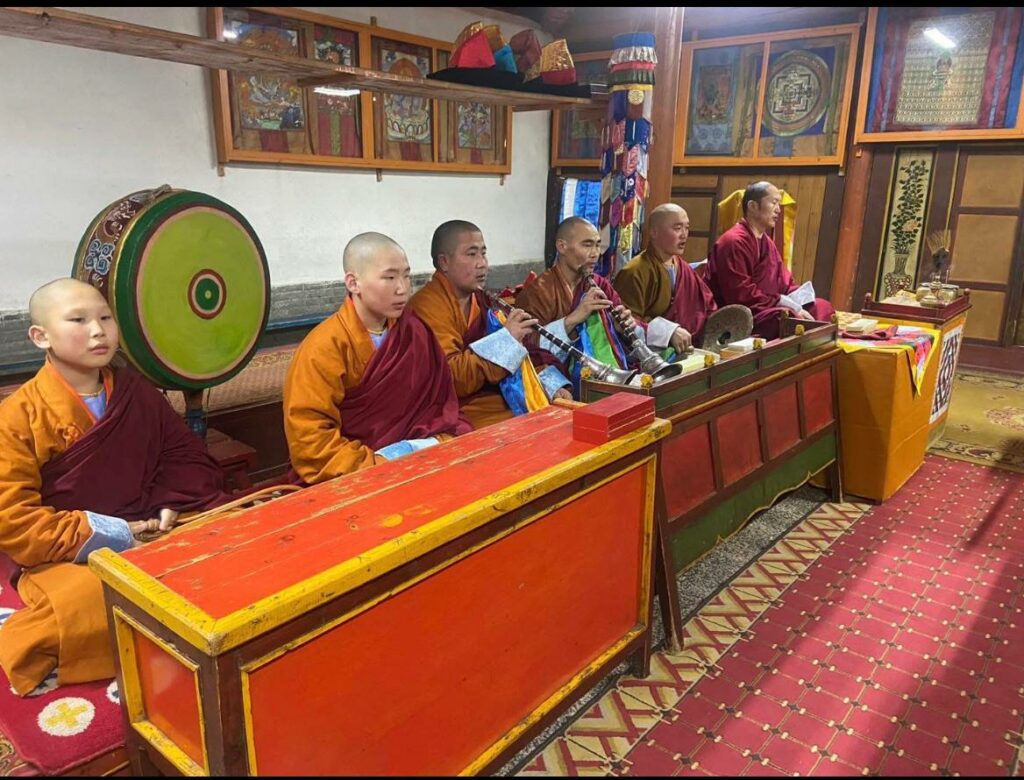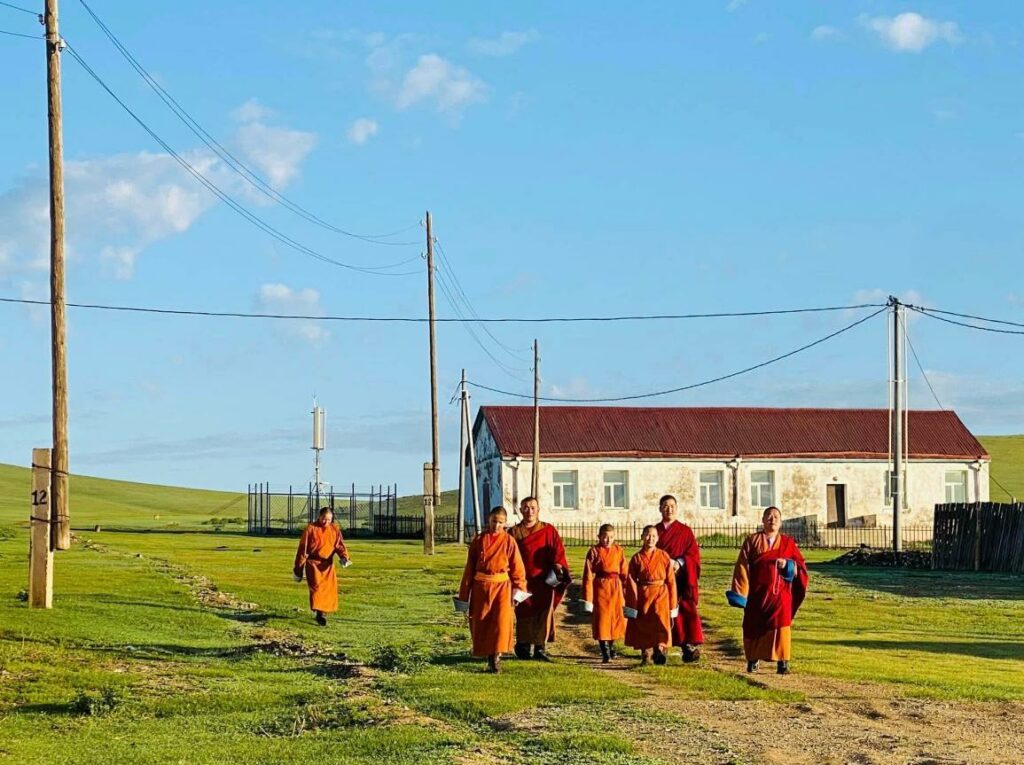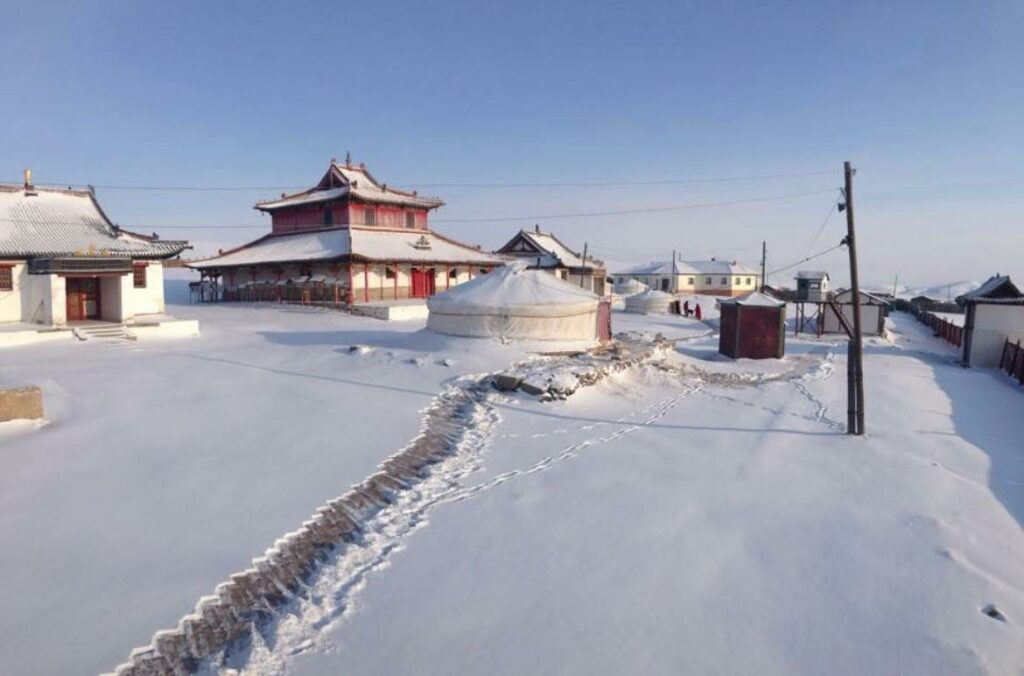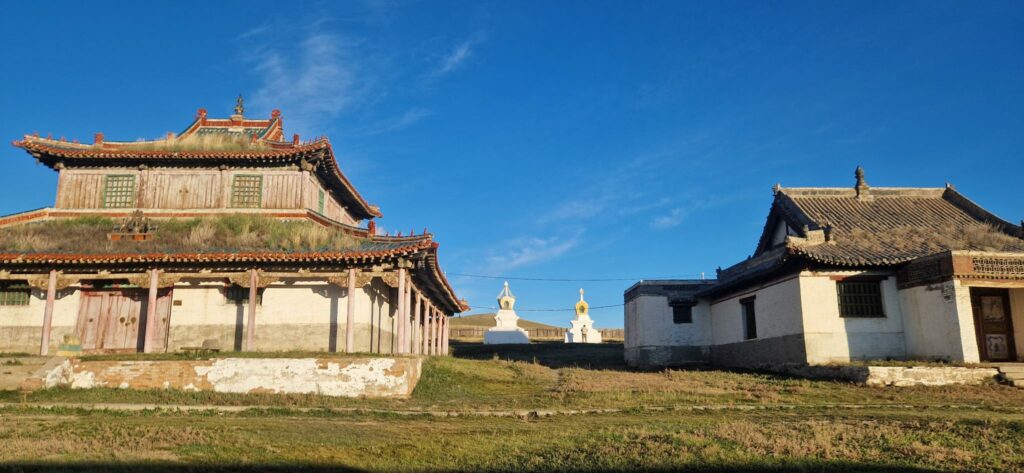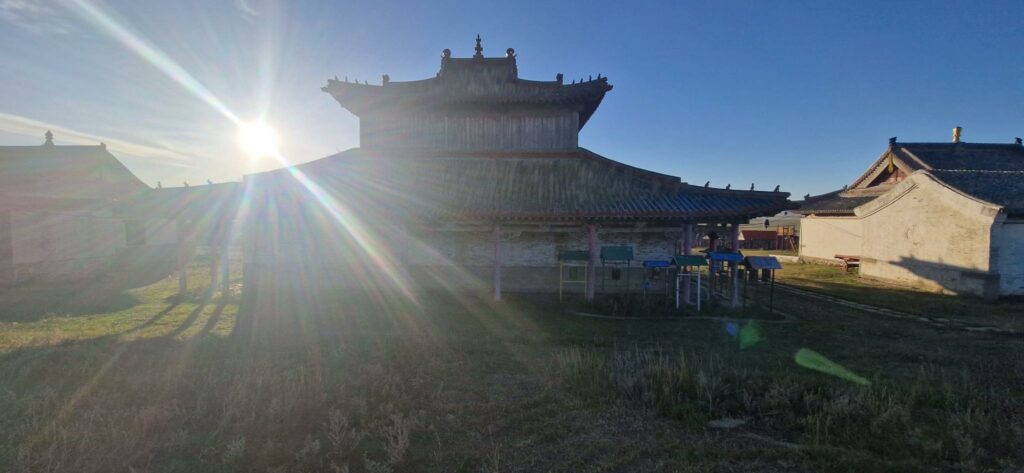
About Shankh Monastery
Shankh Monastery, ”Shankh Khiid”, is located in the province of Övörkhangai, 25 kilometers (15,53 miles) southeast of Kharkhorin. It’s one of the oldest and most important monasteries of Mongolia. It was founded in 1647 by Zanabazar, who was the first Tibetan Buddhism’s religious leader ”Bogdo Gegen”. It was built at the same time as the Tuvkhun Monastery.
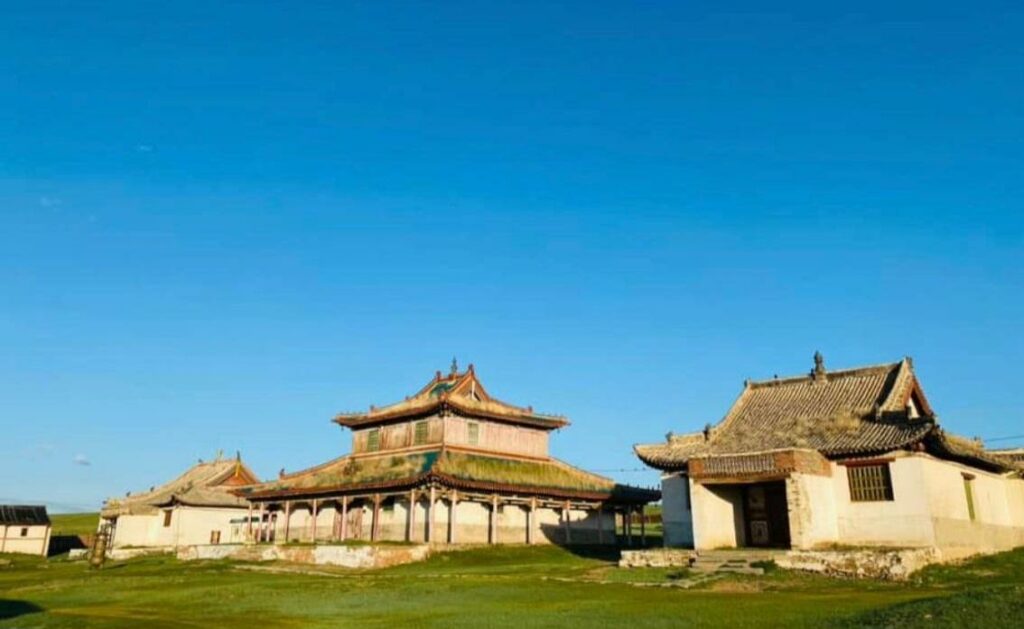
The monastery belongs to the Yellow Hat Sect, “Gelugpa”, which is a school of Tibetan Buddhism. Its main temple is famous for its seven Kalachakras mandalas that represent the 722 Kalachakra divinities, absolutely unique in Mongolia.
This ancient monastery not only offers a glimpse into Mongolia’s rich Buddhist traditions but also provides an opportunity for introspection in a serene environment.
The architecture of Shankh Monastery is a splendid representation of traditional Mongolian design, showcasing intricate carvings, colorful murals, and serene statues that reflect the deep spiritual significance of the site.
The various halls and prayer rooms offer a unique ambiance steeped in history and devotion. The peaceful atmosphere allows for moments of reflection, meditation, or simply appreciating the beauty of the surroundings.
History
Zanabazar founded Shankh Monastery in 1647, when he was only 12 years old. During several years, it was known as the Western monastery, ”Baruun Khuree”. Originally, it was composed of yurts, and it was shifted many times before being set in its present location and being called Shankh in 1787. Nevertheless, many lamas went on maintaining the yurts camp until the end of the 19th century. According to the Russian ethnographer Aleksei M. Pozdneev, who visited the monastery in 1892, there were, in addition to the main temple, built between 1710 and 1790, five large yurts nicely decorated and able to welcome almost 200 persons.
At its height, the monastery had several schools that practiced tantric rituals, particularly the Kalachakra school that practiced Buddhist philosophy and astrology. In 1921, year of the popular Revolution of Mongolia, it was composed of about twenty edifices and housed more than 1500 lamas.
As most of the religious centers of Mongolia, Shankh Monastery was closed in 1937, and the communists destroyed most of its permanent edifices within the context of violent Stalinist purges. Many lamas were executed or sent in work camps in Siberia ; only five novices were allowed to go back to their families’. The main temple, which had escaped from important damages, was then used as a warehouse. Fortunately, most of the precious religious relics of the monastery had been removed and hid by one of the novices, Gombo, and survived to the destruction of the monastery.
After the People Revolution of 1990, the surviving novices came back to Shankh from Siberia and began to restore the main temple. Today, there are around 25 monks in residence.
In 1993, the Dalai Lama sent three Tibetan lamas to Shankh in order to bring Buddhism to light in the country.
Project
Our work at Shankh Monastery addresses three core needs:
1️⃣ Supporting essential restoration efforts on this important Buddhist site
2️⃣ Help sustain the monastic community’s ongoing education and Dharma activities
3️⃣ Provide food supplies for the resident monks as well as local members of the surrounding communities
The project seeks to honor Shankh’s remarkable legacy while meeting the present-day needs of those who keep its ancient traditions alive. We aim to strengthen this sacred site’s role as an important center of Mongolian Buddhist tradition while ensuring its preservation for future generations.
Dons
Vous pouvez apporter une aide directe aux communautés ancestrales et aux populations vulnérables du monde entier en faisant un don. Tous les dons sont pris en compte des déductions fiscales pour les œuvres de bienfaisance dans tous les pays européens, aux États-Unis et dans d'autres parties du monde.
Quand vous soutenez Akhamani, vous contribuez à aider des populations, des cultures, des savoirs et des lieux qui tendent à disparaître, et vous créez un véritable lien qui transcende les frontières.
Veuillez indiquer le montant de votre don ci-dessous et laissez-nous une note pour nous informer du projet auquel votre don est destiné. Nous vous remercions de votre contribution et de votre soutien !
Pour savoir plus sur ce que nous faisons avec votre aide, visitez Événements et la Projets pages.
